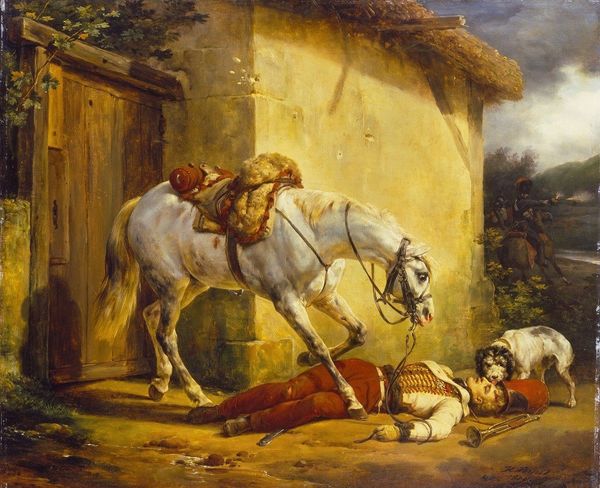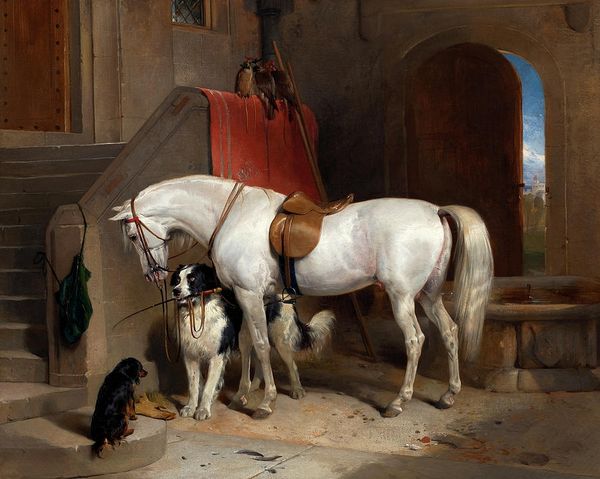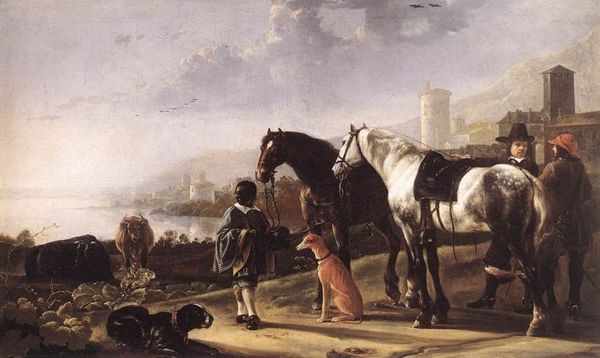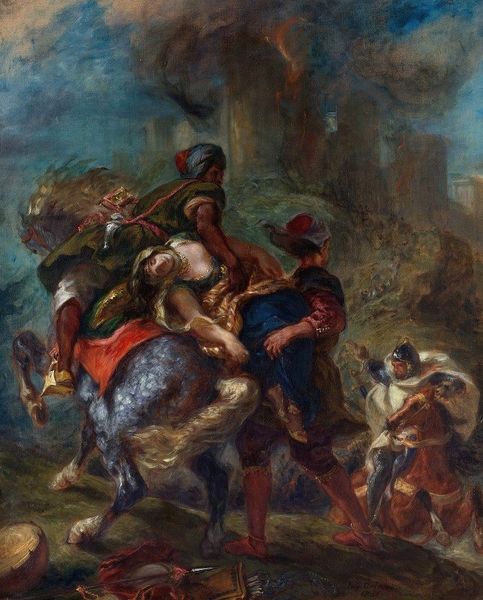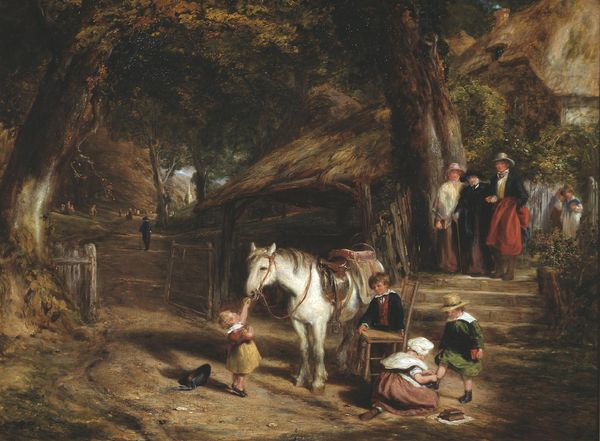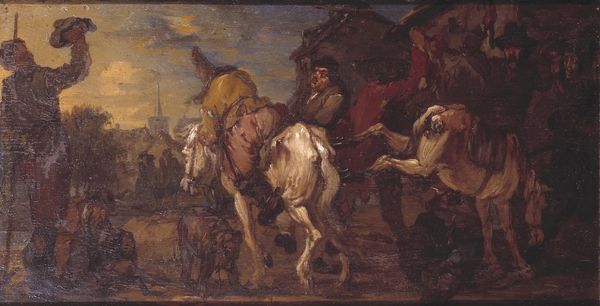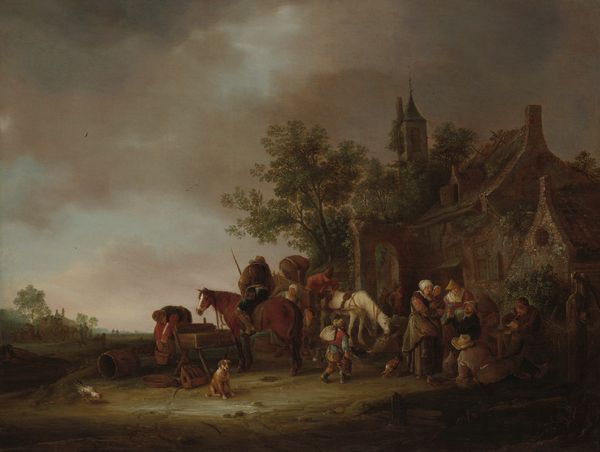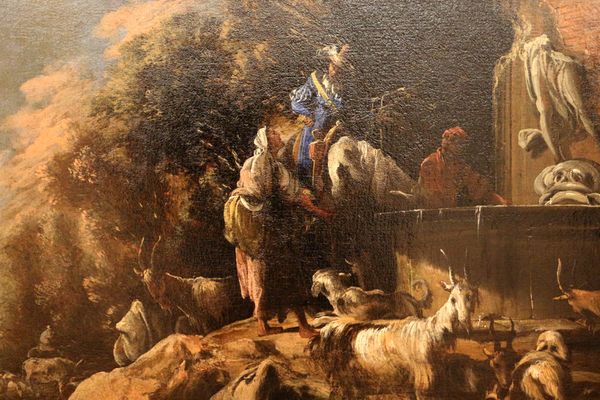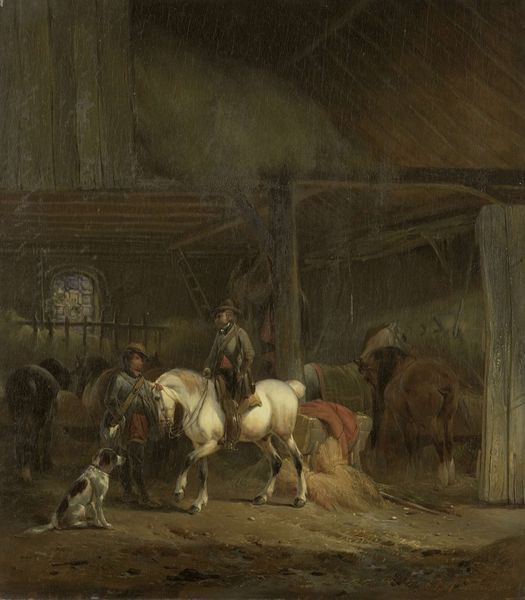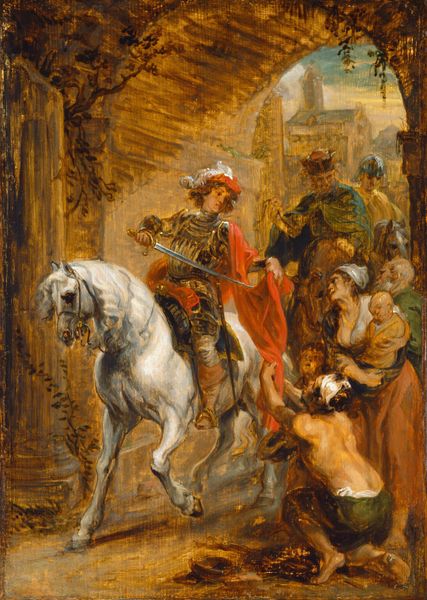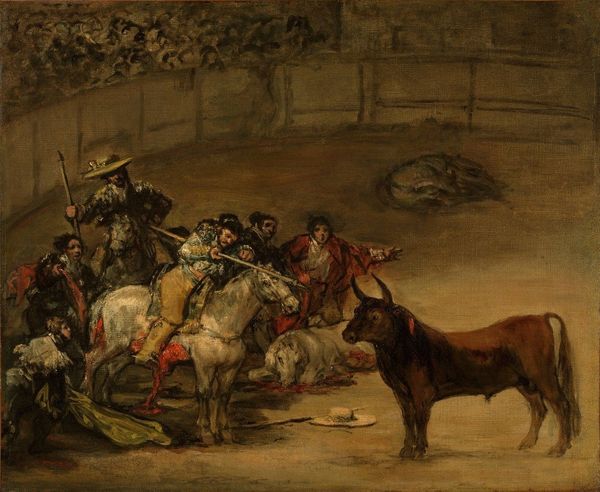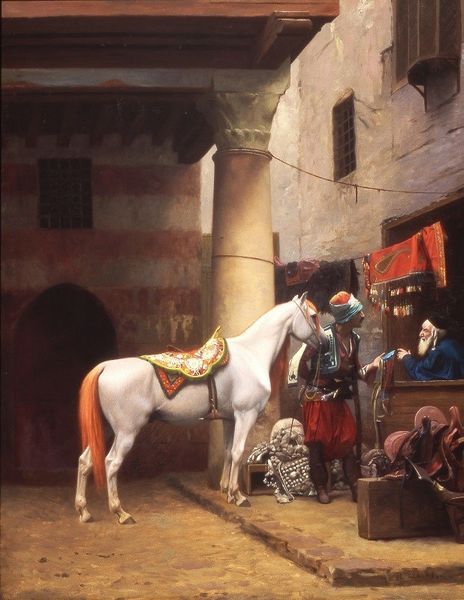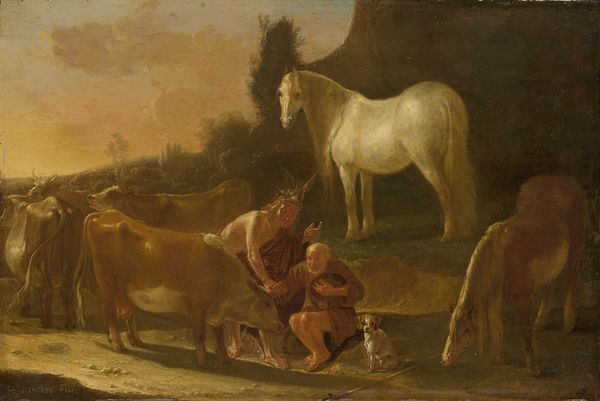
painting, oil-paint
#
portrait
#
narrative-art
#
baroque
#
dutch-golden-age
#
painting
#
oil-paint
#
figuration
#
oil painting
#
genre-painting
#
history-painting
Copyright: Public Domain: Artvee
Curator: Rembrandt van Rijn’s oil on panel from 1630, entitled "The Good Samaritan," presents a classic parable. Editor: My first impression is of quiet concern. The colors are muted, tending towards earth tones, with a focus on the human interaction—it feels heavy, but in a meaningful way. Curator: The composition uses a distinct Baroque chiaroscuro, a manipulation of light and dark, drawing our attention to the central grouping. Notice how the light falls upon the injured man and the compassionate Samaritan as they enter the inn. It contrasts sharply with the shadowy figures lurking in the background, enhancing the emotional depth. Editor: Right, the Samaritan. That specific symbol of unexpected aid appears consistently in art through different eras, showing society’s continuing awareness of this message. The inn, too, is significant. Inns represent havens and thresholds, but are sometimes depicted negatively, which further emphasises this one as positive. Curator: Precisely! The brushwork, particularly in rendering the textures of the Samaritan’s garments and the injured man’s exposed skin, demonstrates Rembrandt’s technical skill. We see broad strokes suggesting the overall form, while subtle variations in tone communicate three-dimensionality. The lines themselves seem almost imbued with compassion through the artful gesture. Editor: I think, here, that light and dark become symbolic as well. Rembrandt employs darkness to portray the moral depravity of the priest and the Levite who passed by. The illumination is, then, more than physical—it represents inherent goodness. It offers both an echo of the scripture and reinforces its moral lesson in an age that was growing aware of social responsibility. Curator: I concur. There is, undeniably, an intentional rendering meant to draw out this precise emotional and thematic understanding. Editor: And by delving deeper into both the artwork’s intrinsic elements and symbolic meanings, we come to further realize that the tale Rembrandt conveys retains lasting influence. Curator: Indeed. Reflecting on Rembrandt’s "The Good Samaritan," my attention lingers on the masterful composition. It reinforces how a considered design elevates an emotional narrative, shaping its lasting impact.
Comments
No comments
Be the first to comment and join the conversation on the ultimate creative platform.

